The Cook Islands are a group of 15 islands in the South Pacific. These islands were first settled by people about 1000 years ago, most likely by Māori explorers from Tahiti. Most Cook Islanders today are Māori, the descendants of the original Cook Islanders.
Location of the Cook Islands:
The island of Rarotonga in the Cook Islands is experiencing an outbreak of crown-of-thorns starfish, also called taramea. During an outbreak, these starfish invade the reef in large numbers and kill almost all of its coral.
Adult crown-of-thorns starfish have sharp, venomous thorns encrusted all over their bodies. They slide their stomachs out through their mouths to digest living coral. When there are too many of them in an area, the rich colors and textures of a healthy reef are replaced by a dull seascape of coral skeletons, where few other species can survive.
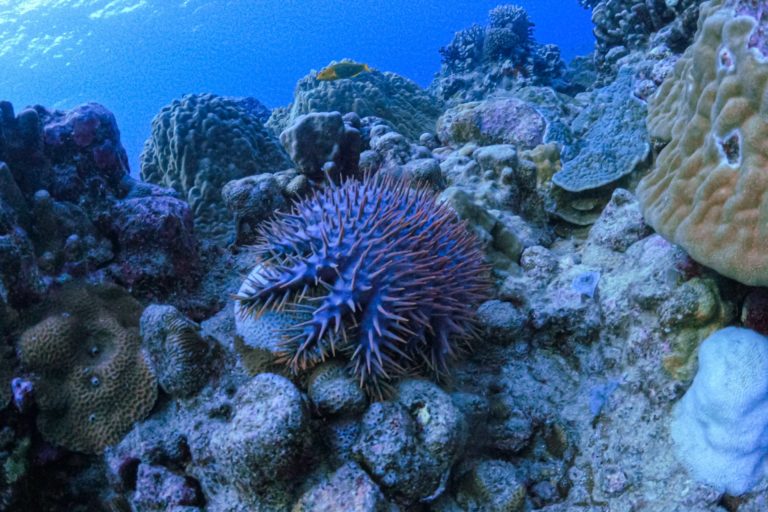
Crown-of-thorns starfish normally live in the deep ocean around Rarotonga, but over the past half-century, the island has experienced several outbreaks where taramea invade the reef and kill much of its coral. There have been outbreaks in 1968-1975 and 1995-2001, and the current outbreak began in 2019.
The cause of the boom in taramea is uncertain, but it may be due to the actions of people. Possible causes include nutrient runoff from agriculture and sewage or shrinking numbers of the starfish’s natural predators.
An environmental organization called Kōrero O Te `Ōrau has been tackling the starfish outbreak since 2020. Project Taramea trains young Māori people, aged 14-23, to scuba dive and remove the taramea from the reef. Every Saturday, the young divers slide into scuba gear, grab sticks from the ironwood trees growing along Rarotonga’s beachfront, and head to the reef.
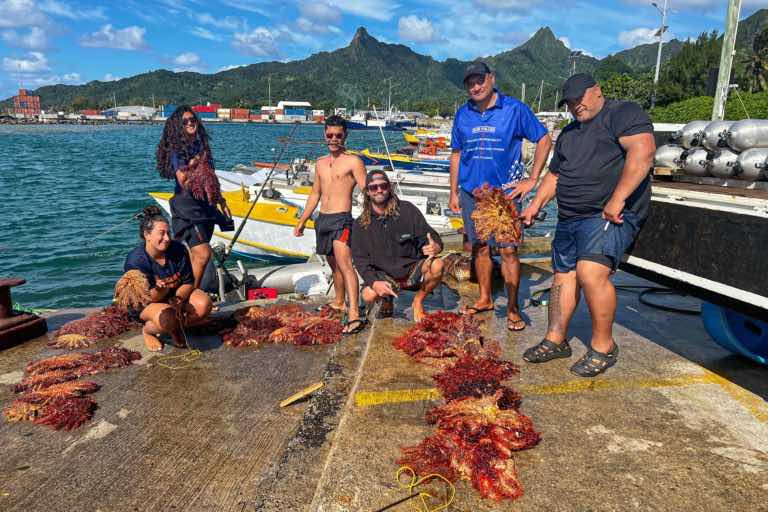
Underwater, when the divers spot one of these coral-eating predators, they slide their stick underneath to dislodge it, stow it in a mesh bag, and continue the hunt.
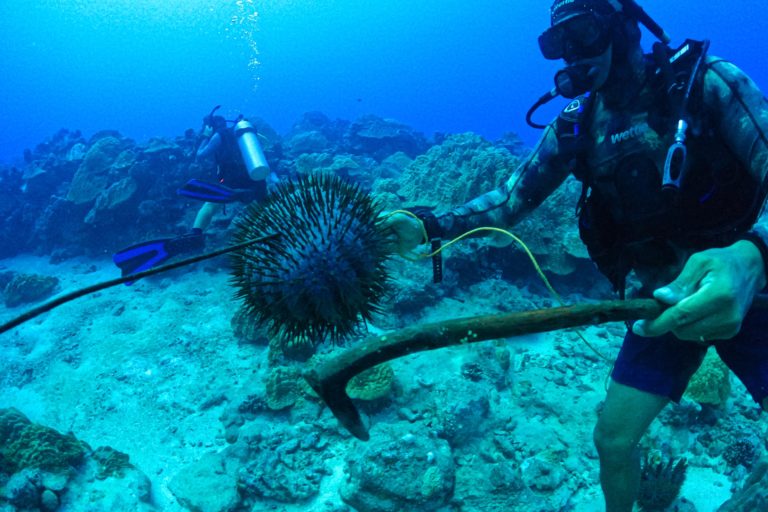
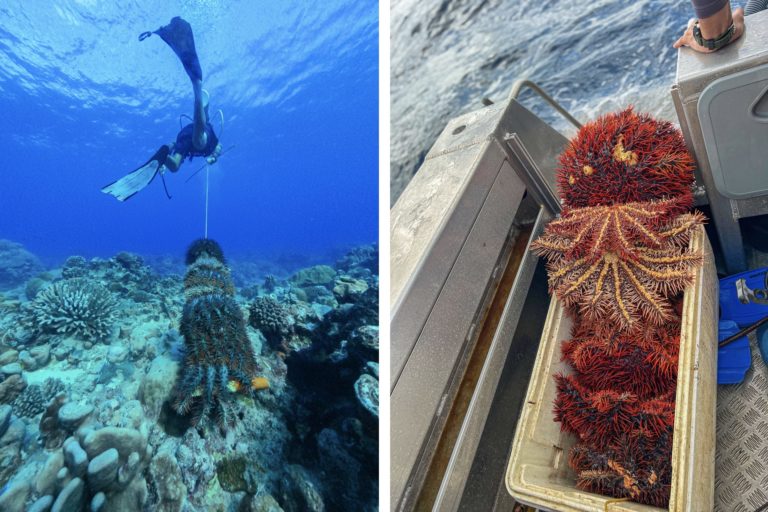
When the diving is done, the team brings their catch ashore. Later, they’ll bury the starfish whole as fertilizer in gardens and under plantings of the native ‘ūtū (king banana) tree. These gardens are part of Kōrero O Te `Ōrau’s reforestation and food security project.
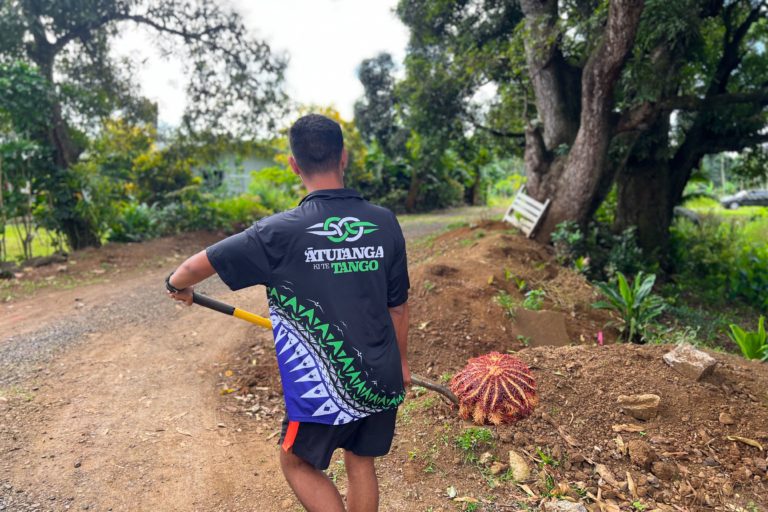
So far, the divers of Project Taramea have collected over 3,700 crown-of-thorns starfish. The outbreak isn’t over, but it’s contained to Rarotonga’s northern and western sides. Ongoing efforts are required to keep starfish numbers low and protect the reef.






